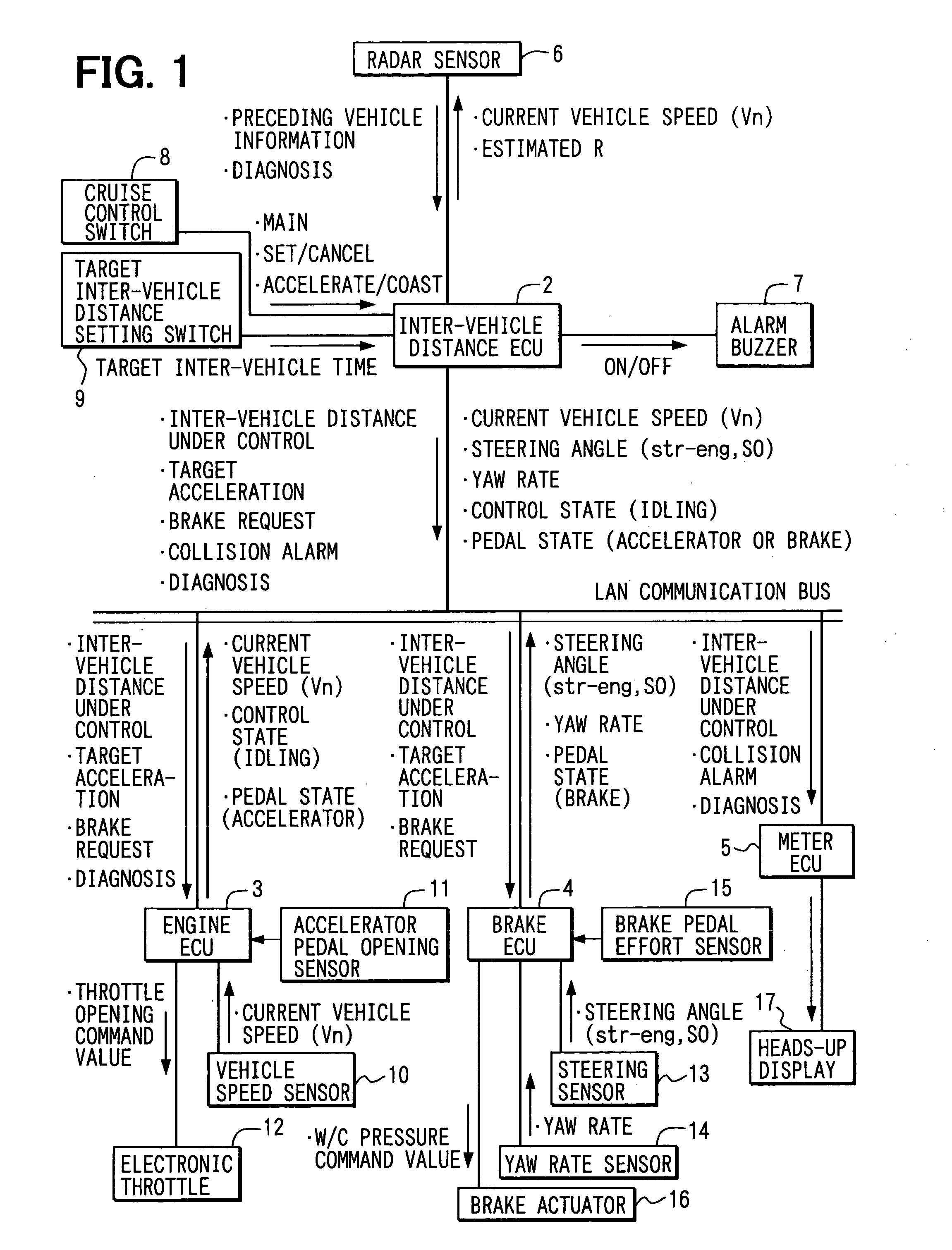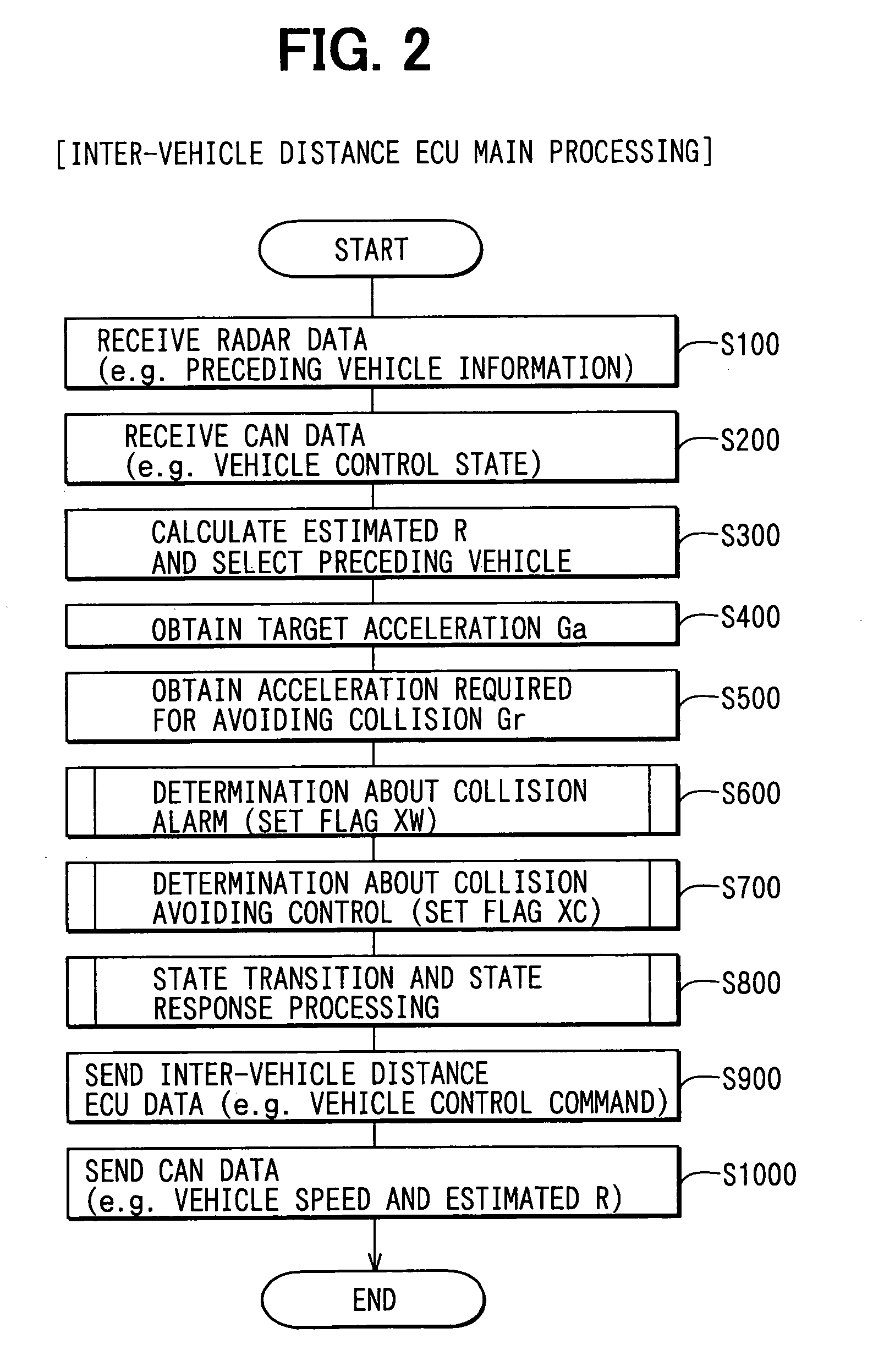Vehicle control system
a technology of vehicle control and control system, which is applied in the direction of process control, pedestrian/occupant safety arrangement, instruments, etc., can solve the problems of increasing various risks, not even being aware of drivers, and controlling at the maximum deceleration cannot avoid collisions
- Summary
- Abstract
- Description
- Claims
- Application Information
AI Technical Summary
Benefits of technology
Problems solved by technology
Method used
Image
Examples
Embodiment Construction
[0028] The following description of the preferred embodiments is merely exemplary in nature and is in no way intended to limit the invention, its application, or uses.
[0029] FIG. 1 is a block diagram schematically illustrating an adaptive cruise control (ACC) system according to the present embodiment. As shown in FIG. 1, the ACC system comprises an inter-vehicle distance electronic control unit (hereinafter to be called "inter-vehicle distance ECU") 2, an engine electronic control unit (hereinafter to be called "engine ECU") 3, a brake electronic control unit (hereinafter to be called "brake ECU") 4, and a meter electronic control unit (hereinafter to be called "meter ECU") 5, which are mutually connected via a LAN communication bus. The ECUs 2, 3, 4, and 5 each employ a well-known microcomputer as a main component and comprise at least a bus controller for performing communications via the LAN communication bus. In the present embodiment, data communications between the ECUs are c...
PUM
 Login to View More
Login to View More Abstract
Description
Claims
Application Information
 Login to View More
Login to View More - R&D
- Intellectual Property
- Life Sciences
- Materials
- Tech Scout
- Unparalleled Data Quality
- Higher Quality Content
- 60% Fewer Hallucinations
Browse by: Latest US Patents, China's latest patents, Technical Efficacy Thesaurus, Application Domain, Technology Topic, Popular Technical Reports.
© 2025 PatSnap. All rights reserved.Legal|Privacy policy|Modern Slavery Act Transparency Statement|Sitemap|About US| Contact US: help@patsnap.com



